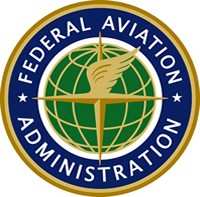Sat, Jan 26, 2013
Agency Says It Has Received Several Reports Of Incorrect Calculations
The FAA has issued a Special Airworthiness Information Bulletin (SAIB) concerning weight and balance performed by Rod Miland and/or RM Aircraft Services of Chugiak, Alaska.

The SAIB was issued because the FAA has been made aware of several instances where aircraft weighing and balance calculations were performed incorrectly. The FAA has collected erroneous weight and balance reports where arm measurements were taken from the main landing gear rather than the datum.
For example, a Cessna 185 airplane main wheel (center of axle) was measured to be 21 inches aft of the datum, and a main wheel to tail wheel distance was measured to be 242 inches. When the as-weighed moments were calculated, Mr. Miland used the distance between the wheels (242 inches) instead of the distance from the datum (242 + 21 = 263 inches) for the arm of the tail wheel. The end result is a center of gravity (CG) of 39.6 versus the true CG of 41.4; an error of 1.8 inches. This error could lead a pilot to believe they loaded their aircraft within CG when in fact it would be loaded aft of CG.
During an FAA (Flight Standards) investigation, the inspectors noted that the scale’s calibration record was in question, and inspections were performed without current aircraft equipment lists or verified fuel levels.
The FAA recommend that the following actions be taken by appropriate personnel:
- Check maintenance records to see if the empty weight and CG they are using is based off of weightings performed by Rod Miland and/or RM Aircraft Services.
- When maintenance records indicate that empty weight and CG they are using is based off of weightings performed by Rod Miland and/or RM Aircraft Services, check the weight and balance calculations for accuracy or reweigh the aircraft. Reference FAA Aviation Safety Program document, FAA-P-8740-5, and Aircraft Weight and Balance Handbook, FAA-H- 8083-1A2
- Maintain knowledge and understand that aircraft performance and handling characteristics are affected by the gross weight and center of gravity. This could dramatically reduce general aviation accidents. An overloaded or improperly balanced aircraft will require more power and greater fuel consumption to maintain flight, and the stability and controllability will be seriously affected. Lack of appreciation for the effects of weight and balance on the performance of aircraft, particularly in combination with such performance reducing factors as high density altitude, frost or ice on the wings, low engine power, severe or uncoordinated maneuvers, and emergency situations is a prime factor in many accidents.
At this time, this airworthiness concern has not been determined to be an unsafe condition that would warrant an AD.
More News
Aero Linx: The American Society of Aerospace Medicine Specialists (ASAMS) The Society is a non-profit organization created to serve as a voice for and represent the professional ne>[...]
Class C Service This service provides, in addition to basic radar service, approved separation between IFR and VFR aircraft, and sequencing of VFR aircraft, and sequencing of VFR a>[...]
Have A Story That NEEDS To Be Featured On Aero-News? Here’s How To Submit A Story To Our Team Some of the greatest new stories ANN has ever covered have been submitted by our>[...]
Also: ERAU Uses UAVs, P550 Group 2 UAS, Starship’s Florida Launches, NASA Missions Chopped The Air Force has put out a call to commission a one-to-one copy of the Iranian-des>[...]
Classic Klyde Morris From 11.07.16 (and Remembering Bob...) FMI: www.klydemorris.com>[...]
 ANN's Daily Aero-Linx (08.27.25)
ANN's Daily Aero-Linx (08.27.25) ANN's Daily Aero-Term (08.27.25): Class C Service
ANN's Daily Aero-Term (08.27.25): Class C Service ANN FAQ: Submit a News Story!
ANN FAQ: Submit a News Story! Airborne-NextGen 08.26.25: Iran UAV Knockoffs, X-37B Spaceplane, Army Training
Airborne-NextGen 08.26.25: Iran UAV Knockoffs, X-37B Spaceplane, Army Training Classic Klyde Morris (08.25.25)
Classic Klyde Morris (08.25.25)



